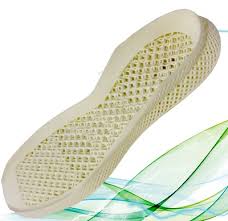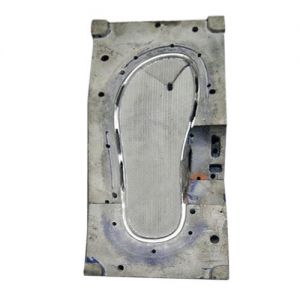Key Benefits
1. Design freedom
The craft of creating footwear has been around for centuries, and for a long time this was all done by hand. American Lyman Blake invented the first shoe stitching the machine in 1856, which was perfected in 1864. This led to mass industrialisation of shoe manufacturing. Now, 3D printing in footwear is poised to take the sector to the next level with more and more designers and manufacturers looking into various possibilities.
2. Faster time-to-market
One of the biggest challenges in producing footwear is the cost and time required to create sole unit molds. Each shoe size requires an individual mold, which can cost thousands of dollars to create. Furthermore, mold manufacturing has long lead times, requiring several months of back and forth communication between the brand and the factories.
In contrast, 3D printing doesn’t require molds, and shoe components can be created directly from a design file, allowing shoemakers to bring new shoes to market much faster.
3. Innovative designs
3D printing enables footwear brands to explore and implement new design features for shoes. Consider mid-soles: traditionally, they are made as a solid piece with the same degree of support throughout the shoe. With 3D printing, shoe performance can be substantially improved, thanks to the ability to create mid-soles with lattice structures, which would be impossible to injection mold.
4. Customization
The benefit of 3D printing is the ability to create shoes tailored to the wearer’s feet.
To create a custom pair of shoes, companies typically use 3D scanning to capture the individual measurements of a customer’s feet. Based on the scans, a unique design of shoe components such as mid-soles or insoles is made, which meet the customer’s unique specifications. The design is then sent to a 3D printer for direct manufacturing.
Applications
Mid-soles
Mid-soles became one of the most significant cases of mass production via additive manufacturing. Adidas and Carbon developed a cost-effective 3D printing method to print thousands of footwear midsoles. The Elastomeric material used for laser sintering, TPU, has already convinced big players in the footwear industry of its benefits. Its mechanical properties offer more than 300% elongation at break point to print final mid-soles without infiltration and with a high fatigue resistance. The TPU material combined with printers delivers a high level of precision to print lattice structures that are impossible to create with traditional manufacturing processes. 3D printing mid-soles using TPU reduces weight and delivers higher performance while allowing personalized design for each shoe model.


Molding
For the short and medium series production, AM is used as a key technology to obtain faster and more cost-effective prototypes and tools. This segment includes molds, patterns and lasts which are to be used in traditional footwear manufacturing processes. Additive manufacturing technology also allows for direct 3D printing of the outsole master models in order to manufacture aluminum molds for vacuum casting or low-pressure injection of elastomeric material. Complex textures on the outsole are printed rapidly and with unequalled precision using materials that are resistant to pressure and high temperatures. This technique can accelerate the introduction of a new small or medium series of sports shoes.
